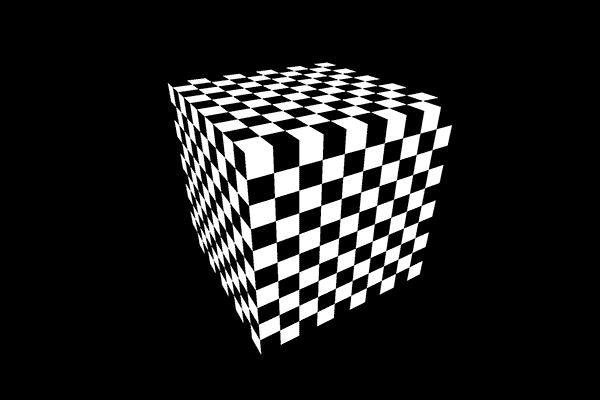Lately when using Three.js I have needed some very specific material qualities that the built in Three.js materials did not allow for so I have started experimenting with the Three.ShaderMaterial. This material allows you to write you own GLSL shaders for Three.js. My hope is that I can get a good understanding of GLSL and implement some of my own shaders and materials in Three.js even with my limited math skills and no prior experience with GLSL.
On this page I will link to some of my own Three.ShaderMaterial experiments and try to update it as I learn more.
You may also want to take a look at my implementation of a three.js car paint shader (a recreartion of the Radeon 9700 demo).
NOTE: these examples are using R70 of THREE.js and material implementation seems to have changed a bit since the R70 release, so some of these may not work on the current release of THREE.js
Custom Mesh Shader Materials
On most of my experiments there are buttons under "Source" to view both the vertex shader source and the fragment shader source.Basic color
basic color shader
This is the most basic of shaders, simple applying a color via the fragment shader.Vertex position color
Vertex position color shader
Takes the fragment color from the vertex position. Simple experiment trying to understand how to send varyings from the vertex shader to the fragment shaderUv position color
Uv position color shader
Takes the fragment color from the uv position. Again trying to understand how to send varyings from the vertex shader to the fragment shaderNormals
Normal shader
Displays the current fragment normal.Checkerboard
Checker board shader
Getting a little more advanced here and actually doing some calculation and multiple uniforms.Simple lines
simple lines shader
A simple lines shader in relation to this stackoverflow questionFaded lines
faded lines shader
Simple faded lines.Dots
dots shader
Simple dots.Noise (voronoise)
"Voronoise" fragment shader
In this shader I took a shader I found on shadertoy.com and implemented it as a Three.js ShaderMaterial.Voronoi with borders
Voronoi with borders shader
This is also a moderfied shader found on shadertoy.com and implemented it as a Three.js ShaderMaterial.Simplex noise 2d
Simplex noise 2d
Implementation of the 2d simplex noise function found hereSimplex noise 3d
Simplex noise 3d
Implementation of the 3d simplex noise function found herePerlin noise 3d
Perlin noise 3d
Another noise, but Perlin this time.Perlin noise 3d - vertex displacement
Perlin noise 3d - vertex displacement
Same as the Perlin example above except doing the noise calculation in the vertex shader and displacing each vertex.Basic color with point lights
Basic color with point lights
This is the same as the first experiment with basic color, except this time adding some point lights. Notice the additional THREE.UniformsLib['lights'] uniforms added with THREE.UniformsUtils.merge() in the page source.Voronoi with point lights = sparkle
Voronoi with point lights
Combine the voronoi with light intensity and you can get a simple sparkle effect.Polkadot 3d Noise
Polkadot noise
An implementation of a polkadot type noise found here. The amount uniform does not work quite as expected, but it serves the purpose of a demo though. Also, setting the box uniform to 1 will give a squarish type effect.Starburst
Starburst
A radial star burst type pattern.2 color fresnel
2 color fresnel
A 2 color fresnel type shader based on the code here. Instead of reflecting the environment, it adds another colour. Maybe such a shader could be used as a base in a two-tone/chameleon car paint shader.Fresnel cubemap reflection
fresnel cubemap reflection
Same as above but reflecting a cubemap instead of a colour. This is pretty much just a copy of the Three.js fresnel example. It seems to have problems related to this issue about calculating the reflection vector in the vertex shader.Fresnel cubemap reflection 2
fresnel cubemap reflection
Here is a copy of the above shader but with the reflection calculation moved to the fragment shader.Wood grain
wood grain
A simple wood grain shader. From RenderMonkeyCel / Toon shader with point lights
cel shader
A simple cel / toon shader with point lights. The intensity is taken from a uniform sent to the shader. It does not respect the light intensity or colour.Cel / Toon shader with point lights 2
cel shader 2
Another cel shader this time there is no intensity uniform send to the shader. Instead, the intensity is taken from the point light colour (summed RGB values).Matrix like shader
matrix shader
Matrix style shader borrowed from shadertoy.
Built-in uniforms and attributes
Three.js provides some uniforms and attributes to the vertex and fragment shaders of the ShaderMaterial by default as outlined at the WebGLProgram docs.Vertex shader
- uniform mat4 modelMatrix - object.matrixWorld
- uniform mat4 modelViewMatrix - camera.matrixWorldInverse * object.matrixWorld
- uniform mat4 projectionMatrix - camera.projectionMatrix
- uniform mat4 viewMatrix - camera.matrixWorldInverse
- uniform mat3 normalMatrix - inverse transpose of modelViewMatrix
- uniform vec3 cameraPosition - camera position in world space
- attribute vec3 position - vertex position
- attribute vec3 normal - vertex normal
- attribute vec2 uv -
- attribute vec2 uv2 -
Fragment shader
- uniform mat4 viewMatrix - camera.matrixWorldInverse
- uniform vec3 cameraPosition - camera position in world space
Articles and tutorials on creating shaders
- Official three.js ShaderMaterial reference
- Aerotwist - intro. to shaders - part 1
- Aerotwist - intro. to shaders - part 2
- https://csantosbh.wordpress.com/2014/01/09/custom-shaders-with-three-js-uniforms-textures-and-lighting/ A good read on how to implement lights into your custom three.js shader.
- Wikibooks GLSL Programming
- Good Youtube playlist on creating shaders
- Book of shaders by Patricio Gonzalez Vivo
- stack.gl stackgl is an open software ecosystem for WebGL, built on top of browserify and npm.
- stackgl packages good place to find some GLSL code
- http://ibreakdownshaders.blogspot.com.au/
- http://www.mathematik.uni-marburg.de/~thormae/lectures/graphics1/code/WebGLShaderLightMat/ShaderLightMat.html
- Altered Qualia's examples of flesh, mercury, sparks, slime
- http://stemkoski.github.io/Three.js/index.html
Other articles not directly related to Three.js, webGL or shaders, but are interesting anyway.
- Equations for organic motion
- Visualizing Algorithms Interesting article, worth a look.


Add a comment